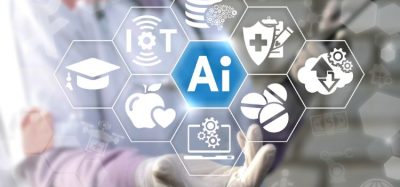Patient insights into the decentralisation of clinical trials
Posted: 3 October 2024 | Dr Diego Ardigò (Chiesi) | No comments yet
While a trial is a part of pharma research, despite industry advancement, the patient experience is not often considered for innovation.


Credit: Chiesi Farmaceutici
One area of innovation is clinical trial decentralisation. Technological advances in electronic communication and health data monitoring allow for fewer in-person visits in both clinical trials and care. Remote participation can be more convenient, reduce the burden on participants and caregivers, and promote equitable access. It also benefits patients with rare diseases and limited mobility, enhancing engagement, recruitment, and retention of a diverse patient population, while supporting sustainable research delivery.
To understand more about the potential for clinical trial decentralisation, a team from Chiesi Farmaceutici recently initiated a study which aimed to understand the perspective of patients with asthma towards the use of clinical trial decentralisation, finding out more about the complexity of the patient journey, while obtaining and comprehensive patient feedback related to easing their burden, supporting their participation, and completing study requirements.
The team conducted semi-structured interviews in a diverse group of patients with moderate-to-severe and uncontrolled asthma in Argentina, Germany, Poland, and South Korea.
Remote participation… benefits patients with rare diseases and limited mobility, enhancing engagement, recruitment, and retention of a diverse patient population, while supporting sustainable research delivery”
The participants were given with a brochure on a study synopsis, based on the ongoing Phase II tanimilast asthma study (TANGO) presented to them as a hypothetical trial. Their first impressions of the putative trial were then captured, as well as their feedback based on elaborated assessments and expectations. The decentralised elements discussed included e-Consent, home spirometry, e-Diary and telemedicine.
We spoke to Diego Ardigò, Head of Global Research and Development at Chiesi, who discussed the study and the TANGO project.
Although the clinical trial experience is at the core of pharmaceutical development, this is an area not always considered for innovation. What approaches have you taken to improve the clinical trial experience?
Patients are not going into the trial just to have a new or better treatment for themselves. Speaking with them, the vast majority want to be in the trial also to benefit other patients. And sometimes they know that, for the most severe diseases, this will benefit the next patient more than them.
With that in mind, what we want to do is try and understand as much as possible the patient journey through the trial. The aim is to understand what is feasible for them, going into the details of the burden they will experience – for example, would ten visits in six months be too many? Would that be easy for them, and for their family and caregivers? So we try to model and test the experience that patients will go through as much as possible.
For instance, if the protocol requires motor endurance tests, like the six minute walking test, and the patient has to travel a few hours to get to the trial site, their fatigue may influence results. Comparatively, if the patient spends the night before in a nearby hotel, that may give completely different results.
What digital and decentralised approaches are you taking in your clinical studies, like TANGO?
One thing we tested was allowing patients to sign consent forms at home rather than in the physician’s office. After discussing with the investigator and the pre-screening process, they go home and sign electronically, with forms in lay language, sometimes with a video explaining the trial. There are some big advantages to this. Firstly, patients can share their decision with their family. But they also have more time to understand and truly express their consent. Without the pressure of being in front of a doctor, they can take their time.
In our study, we found that almost 90 percent wanted that kind of remote consent [allowing patients to sign consent forms at home rather than in the physician’s office], because they perceived that this supported their experience”
In our study, we found that almost 90 percent wanted that kind of remote consent, because they perceived that this supported their experience. There is the physician’s explanation, plus an extra written explanation and signature as three different moments, and two of them are at home.
Another element is home assessments – removing the need for patients to come into the physician’s office or hospital each time. The most important is the use of electronic diaries, allowing them to record daily information on aspects such as pain, quality of life, etc. The patient might use their own phone or be provided with a device, and that means they can set eg, reminders to prompt them to answer questions, take medications, etc.
We are also trying to move more complex assessments, which would normally require a visit to the doctor’s office or hospital, to a patient’s home. For instance, TANGO requires spirometry (lung function test). While not difficult, it has to be done properly. The machinery and the patient needs to inspire and expire in a certain way to make the test reliable. And of course, someone needs to read the outcome and check the result.
We are trying to do everything at home by giving the instrument at home, but also have automated analysis of the results using an AI tool, to get instant insight on whether the test has been done properly or needs to be repeated, and perhaps providing suggestions to the patient on how to do the test. This of course is facilitating a lot: reducing the number of required visits or making it possible to increase how many times we can measure something and letting us measure the same parameter multiple times and reduce variability. Ultimately, this generates better results.
Thirdly, we are experimenting with televisits. Over the course of the pandemic, these became more familiar to patients – allowing remote direct contact with a physician is appreciated. For more rare diseases, we also provide a lot more support at home, such as blood draws and intravenous infusions done by paramedics. We can do the same for specialised tests (eg, cognitive tests) requiring expert operators rather than special environments to be run.
What did you learn about the ability of decentralised approaches to provide access to clinical trials for patients? Were there any types of patients which benefited specifically from a decentralised approach?
Generally, we found that 80-90 percent of the patients responded positively to potential activities that could be moved home, such as e-consent or test diaries.
The only population of patients which might have some issues in general with this approach, and with electronic diaries in particular, are some elderly, who may be less digitally literate. That said, a few aspects, like telemedicine visits, scored very highly among the same kinds of patients. So if they are supported, they can do it.
Interestingly, in our study the patient lived on average only 30 minutes from the clinical trial site. In other cases, like in rare diseases, we have experienced patients having to travel for hours – even by plane – in order to get to the physician. Even with a limited commuting time, the home solutions are vastly preferred.
As the aim of the trial is to generate data to validate and understand the new product, what role can the patient take in developing the solution?
Patients should be included in developing solutions and that is something the industry is beginning to realise. The ‘disease expert’, is usually considered to be the medical expert of the disease – the physician. What we have learned is that the patient is also a key expert, not medically, but of how the disease affects them, how it makes them feel, how they function; the impact of the disease and the impact of the treatment on the normal activities of daily living. These are paramount considerations when designing informative trials: only the patient can tell you what can be done, what cannot be done, which improvements are meaningful for them, and what makes patients participate.
In respiratory medicine we have a lot of devices and delivery systems, and of course the experience of using the device is crucial for the success of the treatment. So patients are involved in that from the very beginning.
How complex is implementing the process of this kind of decentralised trial?
It is complicated, for multiple reasons. Where something would have been recorded on a piece of paper at an hospital site, now it is done with software. Things can go wrong, which are unexpected or cannot be foreseen – for example, the software may have glitches or the patient may use the user interface differently to expected. To collect the information, we now employ more people, more processes, hardware and software. We are removing some of the burden from the patient and putting it on the organisation. This approach is more difficult the first time you, but eventually it becomes more straightforward and streamlined.
What were your conclusions from the TANGO project about decentralised approaches and their advantages for patients?
I think that piece-by-piece, more and more decentralised approaches will be adopted across the board in clinical trials”
You have to think carefully and plan in advance. There are multiple populations that you want to reach with remote solutions in a trial, with each potentially benefitting for different reasons. For example, patients with limited mobility will have to travel less. On the other hand, patients with full mobility do not need to lose time going into hospital. Therefore, the same type of decentralised approach can work for many different types of patients. While it is challenging, in addition to limitations often on the legal, compliance, and regulatory side, I think that piece-by-piece, more and more decentralised approaches will be adopted across the board in clinical trials.
About the author


Issue
Related topics
Biopharmaceuticals, Clinical Development, Clinical Trials, Data Analysis, Drug Development, Industry Insight, Research & Development (R&D), Therapeutics









